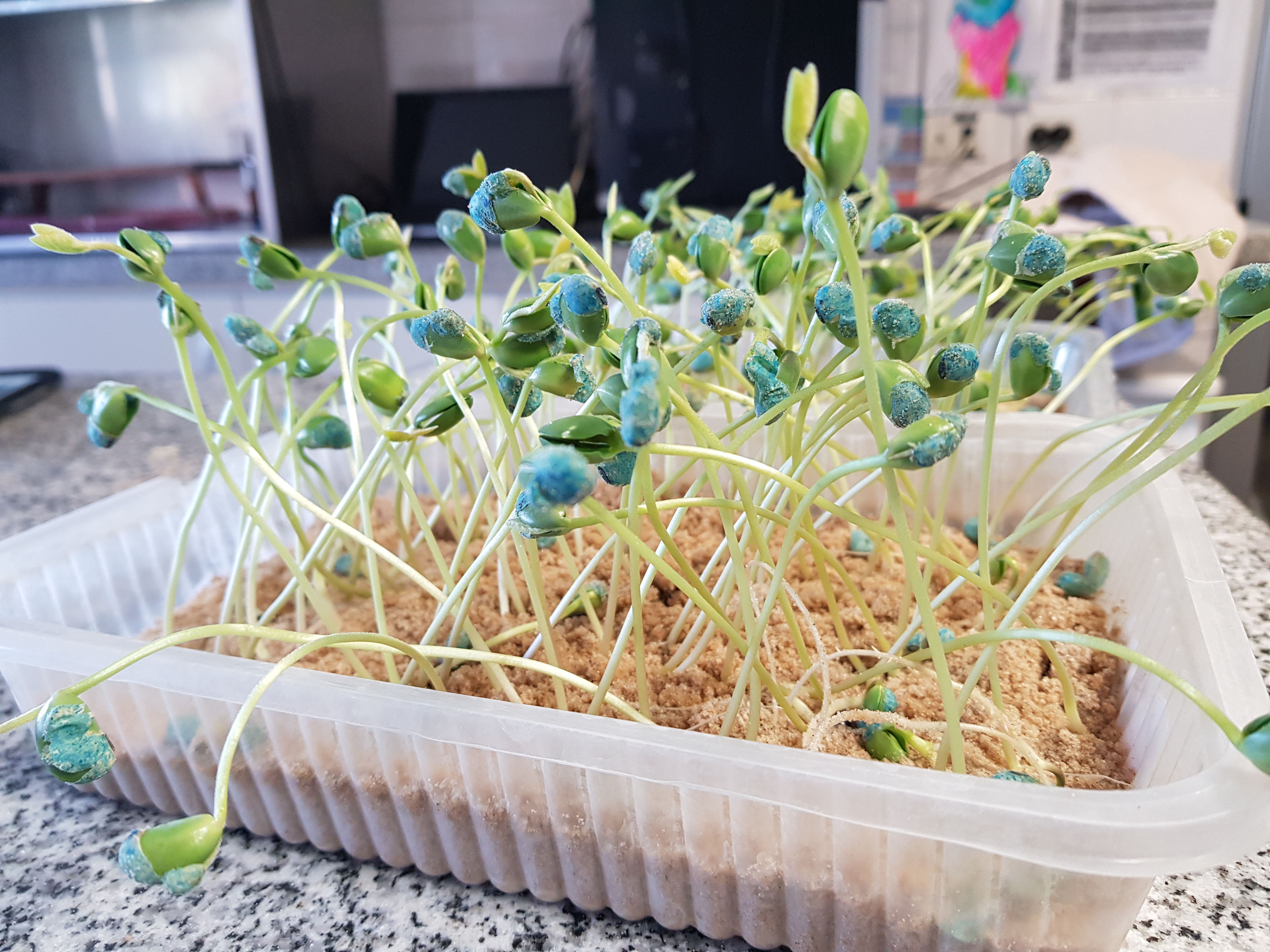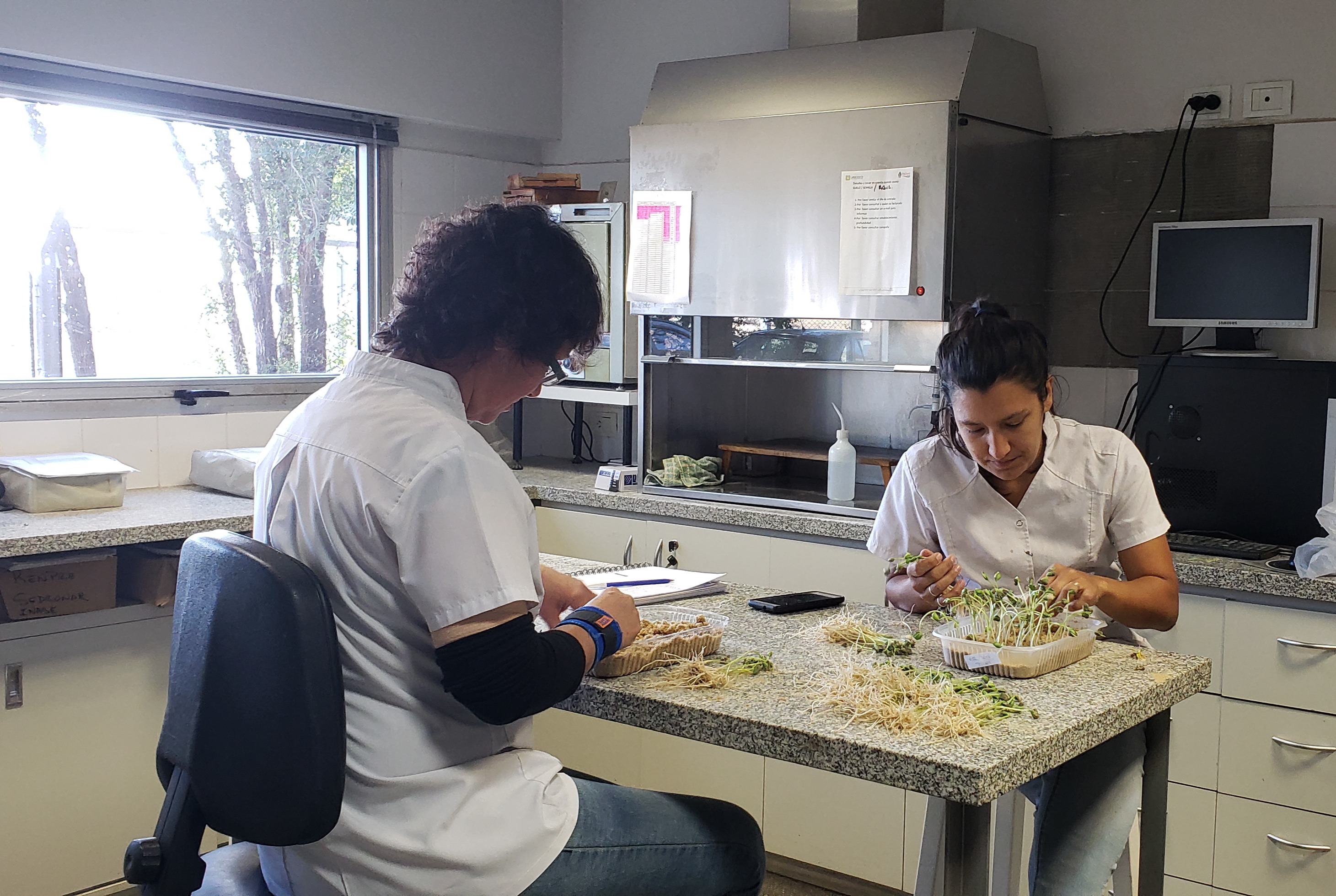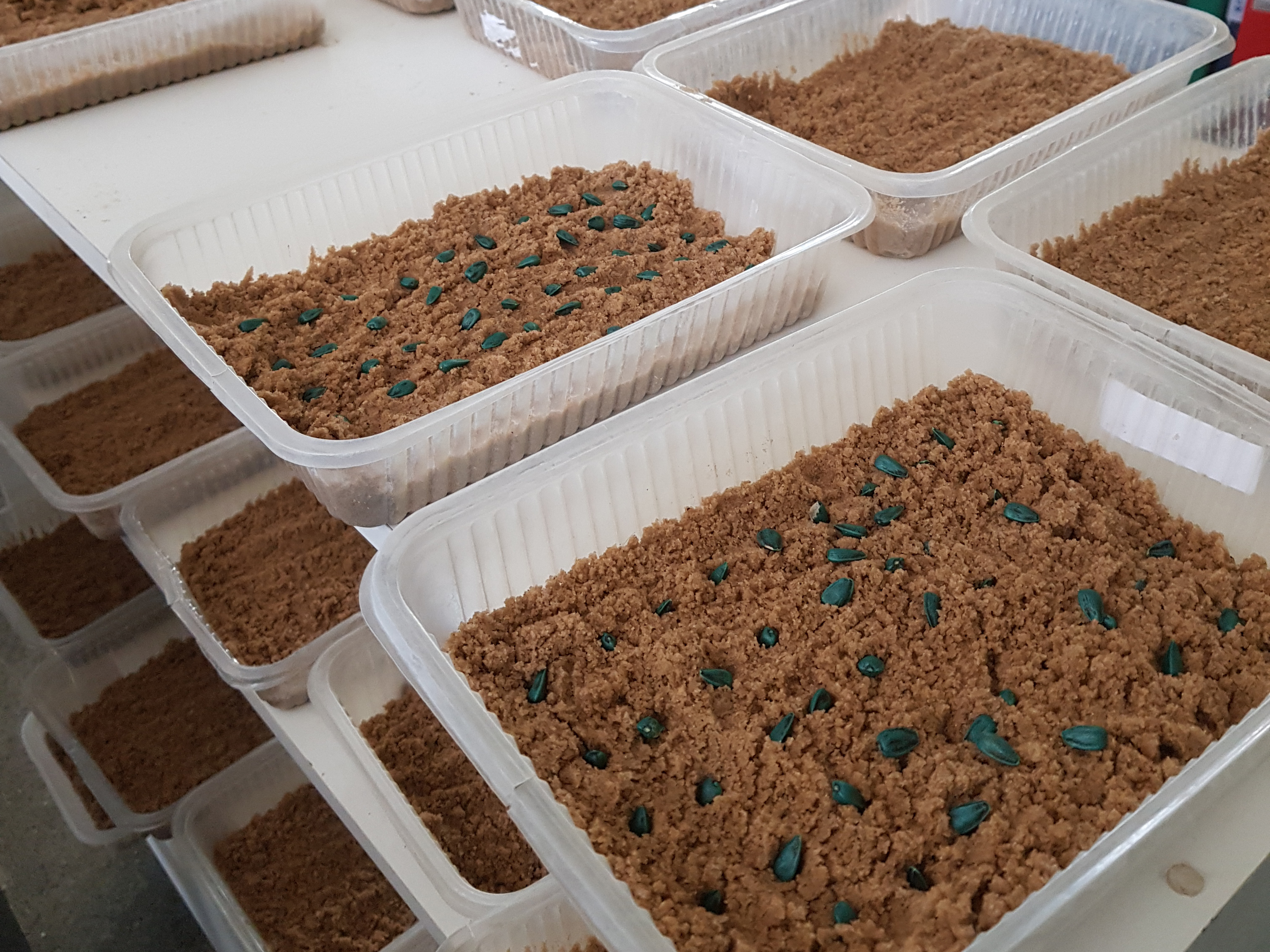


Quantification of N-Nitrates in agricultural soils. Method: colorimetry. Disulphonic phenol. Harper.
Quantification of assimilable Phosphorus in soils. Method: colorimetry. Bray and Kurtz No1.
Determination of pH and electrical conductivity in agricultural soils (in solution 1:2.5) by potentiometric method.
Quantification of sulphates in agricultural soils. Method: turbidimetry. HACH.
Quantification of organic matter in agricultural soils. Method: Walkey and Black.
Quantification of young organic matter in agricultural soils. Method: Walkey and Black.
Determination of texture in agricultural soils. Method: Bouyoucos Hydrometer.
pH correction in water
pH correction in water using different commercial products.
Elements to determine
Physical characteristics: turbidity, colour, odour.
Chemical characteristics: pH
Inorganic substances: Ammonia (NH4+), Chloride (Cl-), Total hardness (CaCO3), Fluoride (F-), Nitrate (NO3-,), Nitrite (NO2-), Total dissolved solids, Sulphates (SO4=), Residual active chlorine (Cl)
Elements to be determined
Physical characteristics: Turbidity, Colour, Odour
Chemical characteristics: pH
Inorganic substances: Ammonia (NH4+), Chloride (Cl-), Total hardness (CaCO3), Fluoride (F-), Nitrate (NO3-,), Nitrite (NO2-), Total dissolved solids, Sulphates (SO4=), Residual active chlorine (Cl), Arsenic (As), Total iron (Fe), Manganese (Mn), Nitrate (NO3-,), Nitrite (NO2-), Total dissolved solids, Sulphates (SO4=), Residual active chlorine (Cl), Arsenic (As), Total iron (Fe), Manganese (Mn).
Seedling evaluation (ISTA rules)
Evaluation of seedlings subjected to heat stress (10°C) (ISTA rules)
Evaluation of germination energy.
Evaluation of seed quality by different staining patterns with tetrazolium salts.
| Bulk Size | Number of Samples |
|---|---|
| Up to 500 kg | 5 |
| from 501 to 3.000 kg | Every 300 kg one, but not less than five |
| 3,001 to 20,000 kg | Every 500 kg one but not less than ten |
| 3,001 to 20,000 kg | Every 500 kg one but not less than ten |
| from 20,001 to more kg | Every 700 kg one but not less than forty |
| Bulk Size | Number of Samples |
|---|---|
| 1 to 4 | 3 per bag |
| 5 to 8 | 2 per bag |
| 9 to 15 | 1 per bag |
| 16 to 30 | 15 at random from batch |
| 31 to 59 | 20 at random from batch |
| 60 or more | 30 at random from the lot |